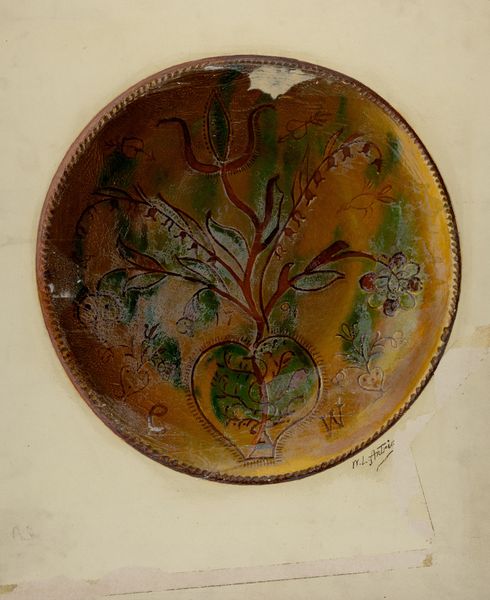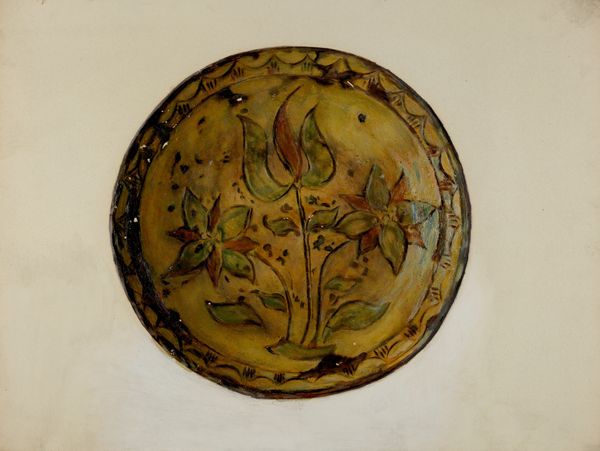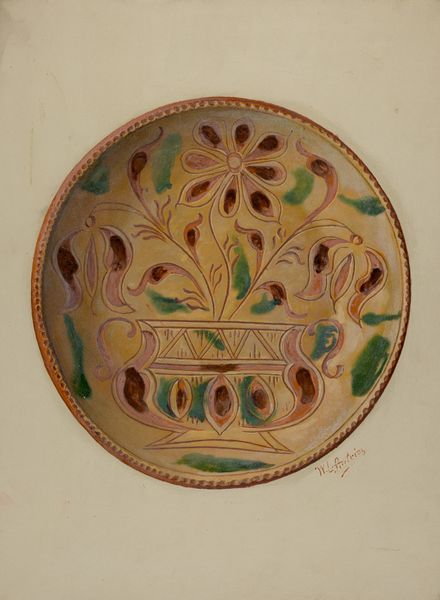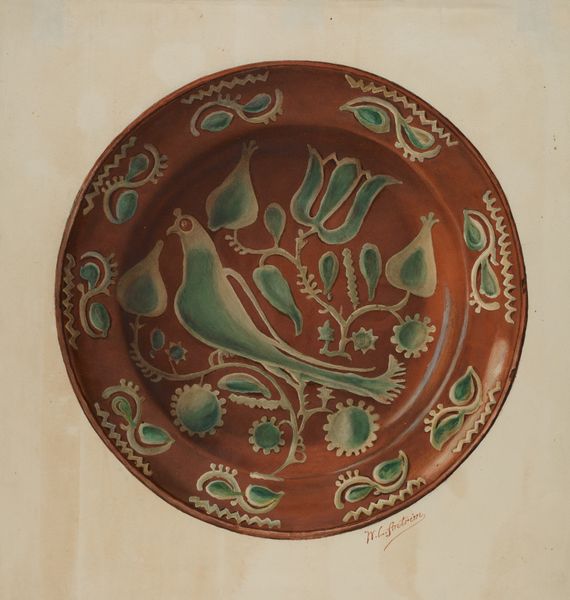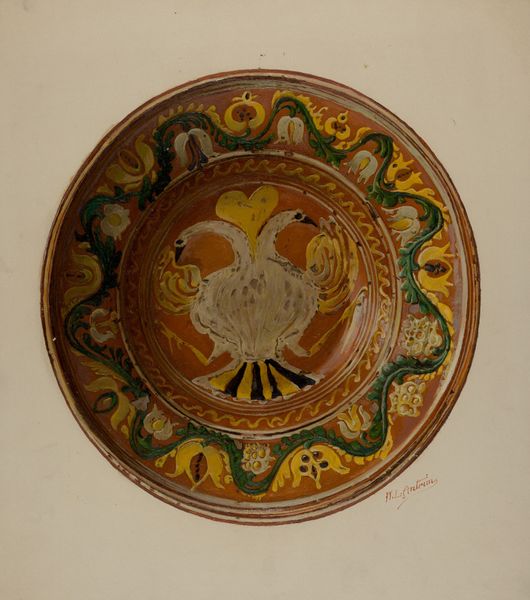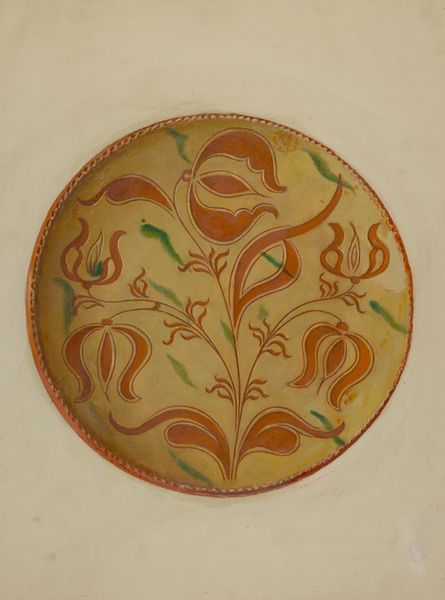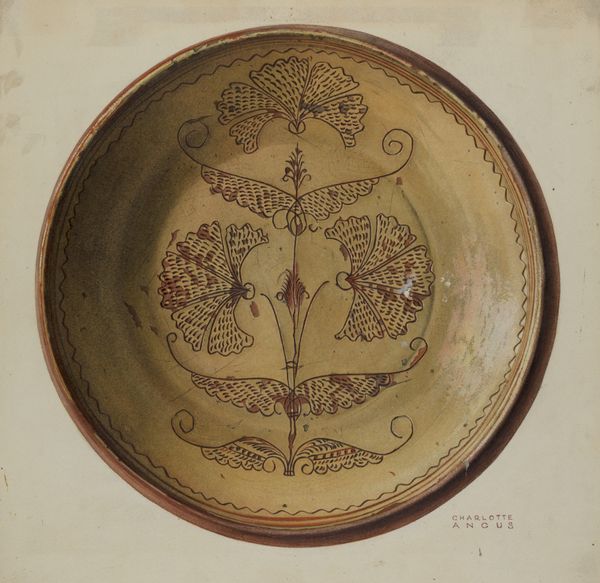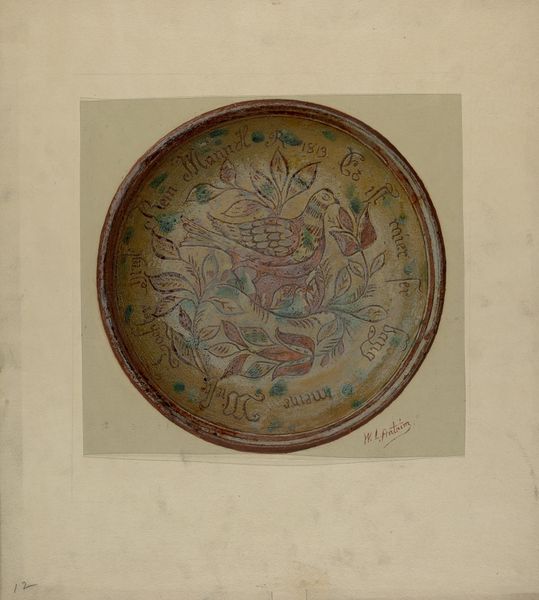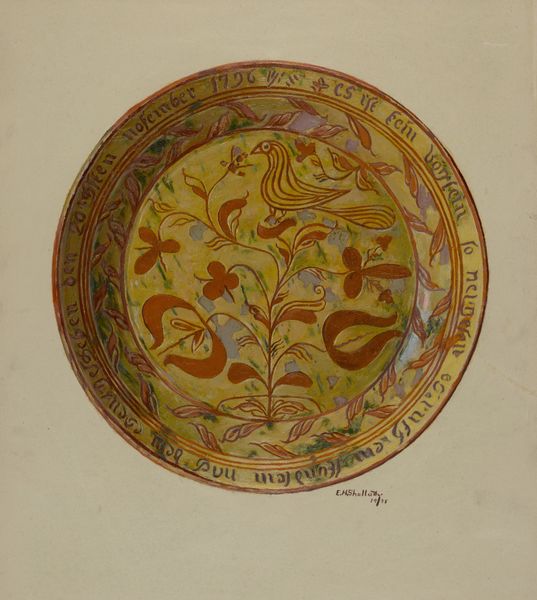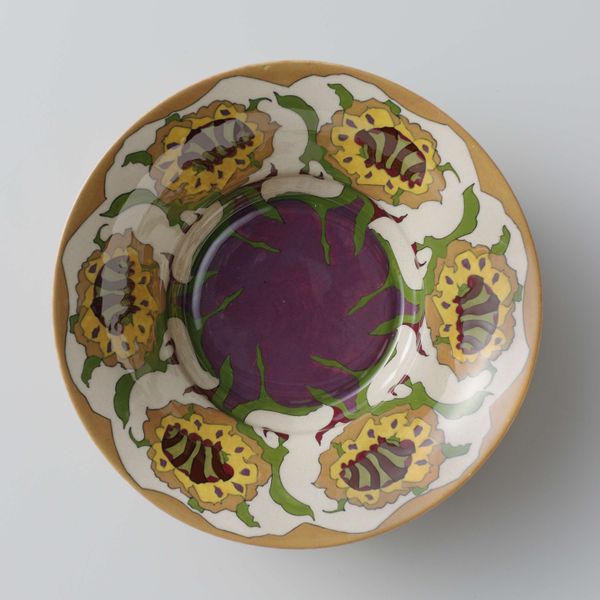
drawing, ceramic, watercolor, earthenware
#
drawing
#
water colours
#
ceramic
#
watercolor
#
earthenware
#
folk-art
#
ceramic
#
earthenware
Dimensions: overall: 50.9 x 38 cm (20 1/16 x 14 15/16 in.) Original IAD Object: 14 1/2" in diameter
Copyright: National Gallery of Art: CC0 1.0
Curator: Let's delve into this watercolor drawing of a "Pa. German Plate," believed to have been created around 1938. It's attributed to William L. Antrim, known for his depictions of folk art objects. What's your immediate impression of it? Editor: Well, it has a comforting, almost homespun vibe, doesn't it? The deep reds and greens feel earthy, while the bird design brings to mind those quaint little stories you read as a child. I also like how a primitive rendering can carry so much sentiment. Curator: Exactly! This piece provides a window into the cultural aesthetics and traditions of the Pennsylvania German community, revealing their artistry. The earthenware itself—it would have been functional, everyday tableware elevated through these colorful, symbolic decorations. Notice how the avian motif and floral patterns are often read as symbols of luck, fertility, and prosperity within that culture. Editor: The glaze has a lovely sheen, almost like it’s been fired a few times. Does anyone even do that anymore? The way the greens and reds interplay is a nice touch, really highlighting the earthiness of the materials involved in its creation. Curator: Indeed. The folk art movement embraced a return to traditional craft techniques as an alternative to mass production during the interwar era. This piece echoes those ideals but also reminds me of dialogues in cultural identity happening at the time, especially considering shifts within immigrant communities during the early 20th century in America. The fact that it's preserved in watercolor rather than the physical object could suggest something about that cultural preservation act itself! Editor: I totally see it! Looking at the drawing, I have to ask what narratives were silenced. It's such an appealing aesthetic—bright, comforting. It feels very rooted in storytelling. It’s as if someone captured a snippet of everyday life from their point of view. Did everyone even *like* birds and foliage designs or was that more propaganda? Maybe the artist hoped for better? Or longed for tradition? Curator: Excellent questions. They highlight how these visual objects can represent so many different positions at once. Editor: I think what strikes me most is its quiet, optimistic essence. The design elements—they're arranged in a very charming way that sparks joy in the everyday object. That the image endures suggests more than an antique piece, or drawing. Instead, perhaps a celebration, but one of remembrance, too. Curator: Thank you. I agree completely, on a sentimental level it holds multiple layers. It brings this object and era to life in its representation.
Comments
No comments
Be the first to comment and join the conversation on the ultimate creative platform.
